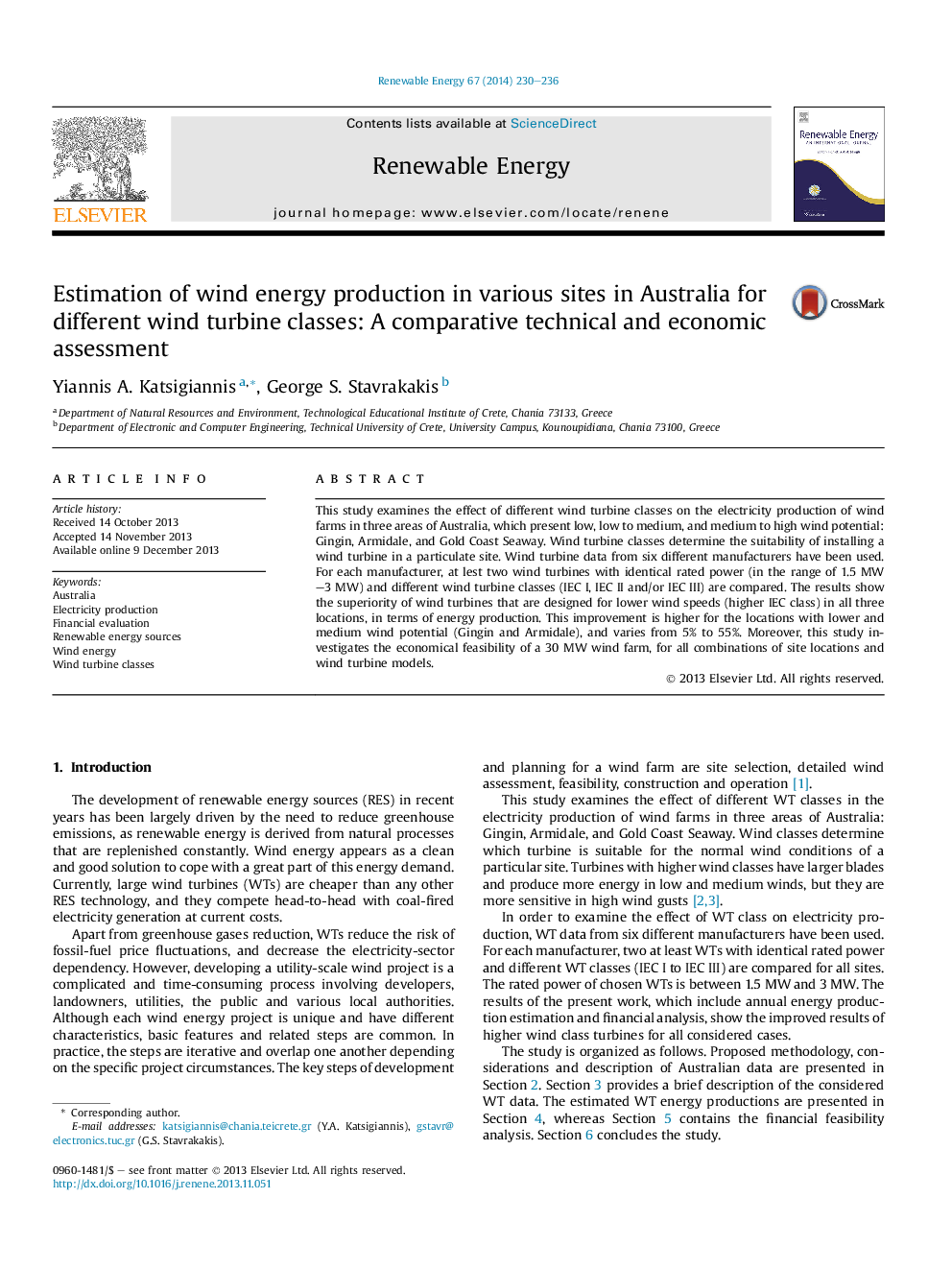| Article ID | Journal | Published Year | Pages | File Type |
|---|---|---|---|---|
| 6768364 | Renewable Energy | 2014 | 7 Pages |
Abstract
This study examines the effect of different wind turbine classes on the electricity production of wind farms in three areas of Australia, which present low, low to medium, and medium to high wind potential: Gingin, Armidale, and Gold Coast Seaway. Wind turbine classes determine the suitability of installing a wind turbine in a particulate site. Wind turbine data from six different manufacturers have been used. For each manufacturer, at lest two wind turbines with identical rated power (in the range of 1.5Â MW-3Â MW) and different wind turbine classes (IEC I, IEC II and/or IEC III) are compared. The results show the superiority of wind turbines that are designed for lower wind speeds (higher IEC class) in all three locations, in terms of energy production. This improvement is higher for the locations with lower and medium wind potential (Gingin and Armidale), and varies from 5% to 55%. Moreover, this study investigates the economical feasibility of a 30Â MW wind farm, for all combinations of site locations and wind turbine models.
Related Topics
Physical Sciences and Engineering
Energy
Renewable Energy, Sustainability and the Environment
Authors
Yiannis A. Katsigiannis, George S. Stavrakakis,
